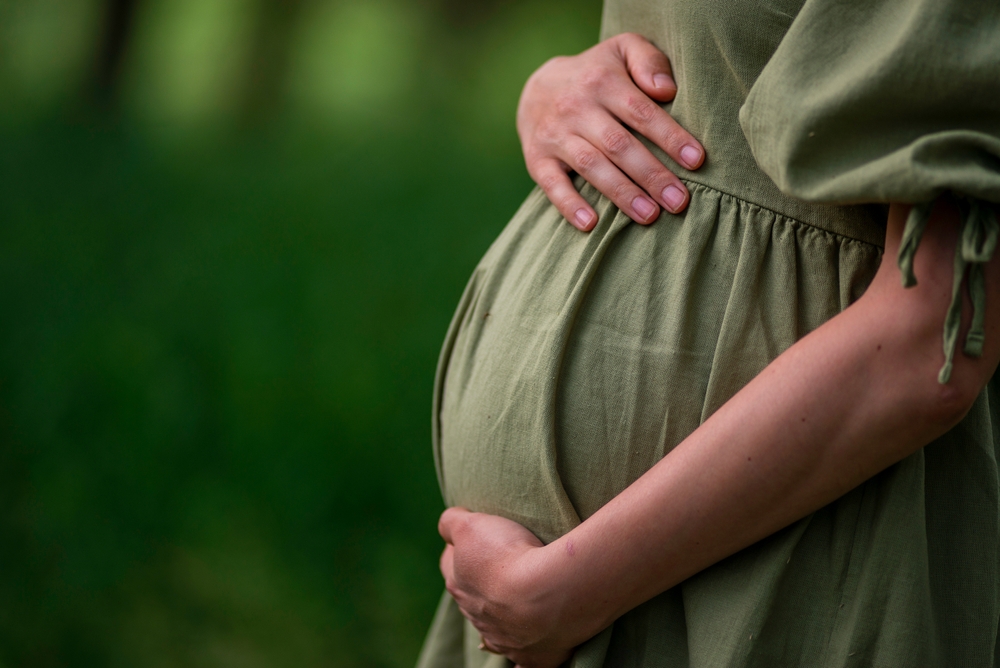If you’ve ever given birth to a baby or been close to someone who has, then you will know that the recovery process is not easy. A woman posted a photo depicting the placenta’s size on the Labor of Love Facebook page to explain how long it takes to recover after childbirth. The photo has now gone viral and has opened up a conversation about the need for better maternity leave in America.
It Takes Longer To Recover After Childbirth Than We Realize

The viral photo is one of a paper plate with a ruler across it to show the plate’s diameter. It turns out that a standard paper plate is the size of the average placenta. When women give birth, the placenta leaves a wound where it is attached to the uterus. Laura Fry, the woman who posted the photo, explains that this wound takes four to six weeks to heal fully. (1)
“After a baby is born, mothers are told to take it easy for at least 4-6 weeks. There are good reasons for that! One of those reasons is that after the baby is born, mothers are left with a wound on the inside of their uterus where the placenta was attached. That wound will take at least 4-6 weeks to completely heal.” she wrote. (1)
During the healing time, women are susceptible to infection and bleeding. It is critical that they rest and not push themselves too hard. Otherwise, the recovery process could take even longer. What’s worse, they could have some challenging, longer-term health complications. (1)
Read More: Woman Says Husband ‘Shushing’ Her During Childbirth Ended Their Marriage
Why It Takes So Long To Recover From Childbirth

The postpartum period is considered to be the first six weeks after giving birth. However, many experts believe full recovery after childbirth can be up to six months. (2) They say that the female body will go through three distinct phases (2):
Phase 1- 6- 12 hours: The initial/acute phase.

This is a period of rapid change and can have any number of complications, including:
- Postpartum hemorrhage
- Uterine inversion
- Amniotic fluid embolism
- Eclampsia
Phase 2- 2-6 weeks: The Subacute postpartum period.

The body undergoes major changes, both physically and emotionally. Changes are less rapid and usually identifiable by the woman herself. This is also when postpartum depression can begin to set in.
Phase 3- 6 weeks up to 6 months: The Delayed postpartum period.

Here, changes are more gradual, and severe complications are rare. During this time, the body slowly starts to repair its muscles and connective tissues back to a pre-pregnancy state. This is a slow process, so women have to be careful with how active they are and how much they push themselves during this time. Postpartum depression can also set in at any point during this phase.
What Changes Happen in the Body During Pregnancy

The female body goes through a lot while pregnant and giving birth. Hip structure changes, and joints become looser to make room for a growing baby. Then, there are all of the hormonal changes. These vary depending on what phase of pregnancy you are in, and they change even more during and after the delivery process. (3)
There are also physical things that may never fully return to a pre-pregnancy state. Often women’s ability to hold their pee changes after childbirth. Giving birth also does quite a lot of damage to the pelvic floor, and it can take a very long time for that to recover. (3)
Many women’s vaginas also tear somewhat when giving birth, particularly if their baby is quite large. This means the first few days after birth can be somewhat painful while this wound heals. If you’ve had a C-section, this procedure will also come with its own host of recovery details. (3)
The Bottom Line

Any woman recovering from giving birth needs time and plenty of help and support. While they tend to go into mom-mode, they need to be given some time to themselves to recover and recuperate.
If you’re a new mom, don’t push yourself too hard. Take this time to slow down and enjoy all the triumphs and challenges of having a new baby. Ask for help and accept it when offered.
If you are a partner or close friend to someone who has recently given birth, support them. Helping with physical tasks like house cleaning and chores or grocery shopping will prevent the new moms from over-exerting themselves.
Take your time, and don’t rush things. The body will heal, and you’ve got years left of your life to go-go-go with your child. Take the necessary steps to recover after childbirth now so you can enjoy those years later.
Read More: Extraordinary Birth Photos Capture Dad Delivering His Baby on the ER Floor
Sources
- “Labor of Love.” Facebook.
- “Postpartum period: three distinct but continuous phases.” NCBI. Mattea Romano, et al. April- June 2010.
- “Week 1.” Health Line. Abigail Rasminsky. July 31, 2018

